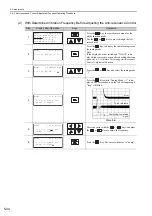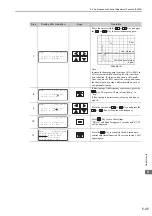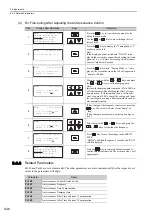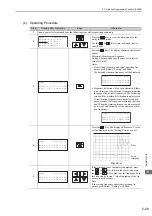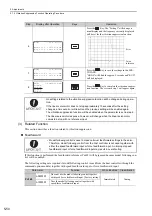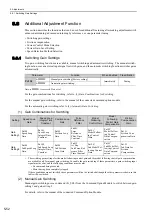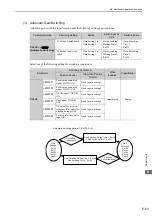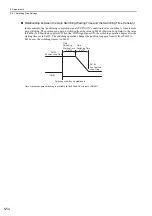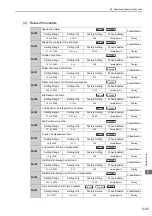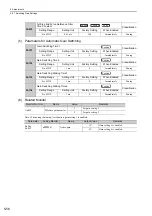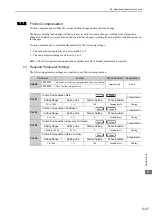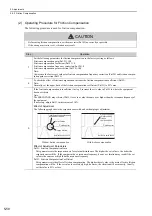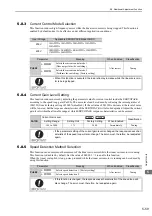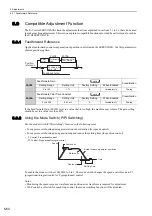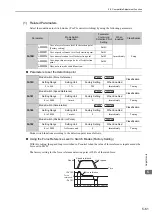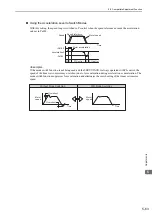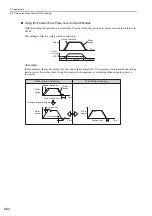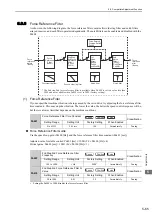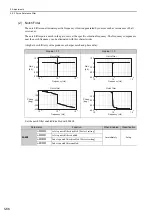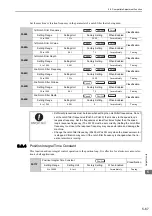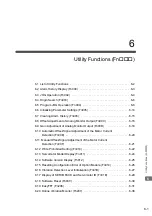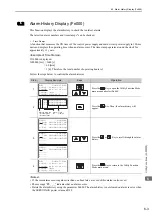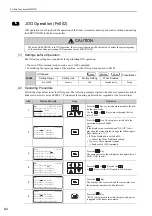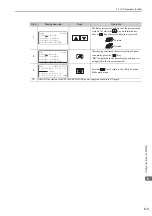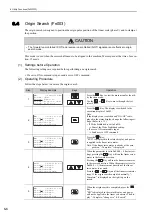
5 Adjustments
5.8.2 Friction Compensation
5-58
(2) Operating Procedure for Friction Compensation
The following procedure is used for friction compensation.
CAUTION
Before using friction compensation, set the mass ratio (Pn103) as correctly as possible.
If the wrong mass ratio is set, vibration may result.
Step
Operation
1
Set the following parameters for friction compensation to the factory setting as follows.
Friction compensation gain (Pn121): 100
Friction compensation coefficient (Pn123): 0
Friction compensation frequency correction (Pn124): 0
Friction compensation gain correction (Pn125): 100
Note:
Always use the factory-set values for friction compensation frequency correction (Pn124) and friction compen-
sation gain correction (Pn125).
2
To check the effect of friction compensation, increase the friction compensation coefficient (Pn123).
Note:
Normally, set the upper limit of the friction compensation coefficient (Pn123) to 95% max.
3
If the friction compensation is insufficient in step 2, increase the set value in Pn121 to where the equipment
does not vibrate.
Note:
The SERVOPACK may vibrate if Pn121 is set to a value the same as or higher than the resonance frequency of
the equipment.
If necessary, adjust Pn121 in increments of 10%.
Effect of Adjustment
The following graph shows the responsiveness with and without proper adjustment.
Effect of Adjustment Parameters
Pn121: Friction Compensation Gain
This parameter sets the responsiveness for external disturbance. The higher the set value is, the better the
responsiveness will be. If the equipment has a resonance frequency, however, vibration may result if the set
value is the same as or high than the resonance frequency.
Pn123: Friction Compensation Coefficient
This parameter sets the effect of friction compensation. The higher the set value is, the more effective friction
compensation will be. If the set value is excessively high, however, the vibration will occur easily. Usually,
set the value to 95% or less.
⟎Ꮕ
⟎Ꮕ
ᜰࡄ࡞ࠬㅦᐲ
ᜰࡄ࡞ࠬㅦᐲ
⟎Ꮕ
⟎Ꮕ
ᜰࡄ࡞ࠬㅦᐲ
ᜰࡄ࡞ࠬㅦᐲ
ᡂᄢ㧘ᡂዊ
ᡂᄢ㧘ᡂዊ
ᡂᄢ
ᡂᄢ
Position error
Position error
Small friction
Responsiveness
is improved by
friction
compensation.
Large friction
Without friction compensation
With friction compensation
Insufficient responsiveness
because of friction
Reference pulse speed
Reference pulse speed

